Many pre-recorded MiniDiscs are rare and expensive. An extra rare special case is the dummy promo copy of Michael Jackson’s “Dangerous”, which we will dissect in this article.

Just looking at the case, the dummy promo copy looks like the regular retail MiniDisc:
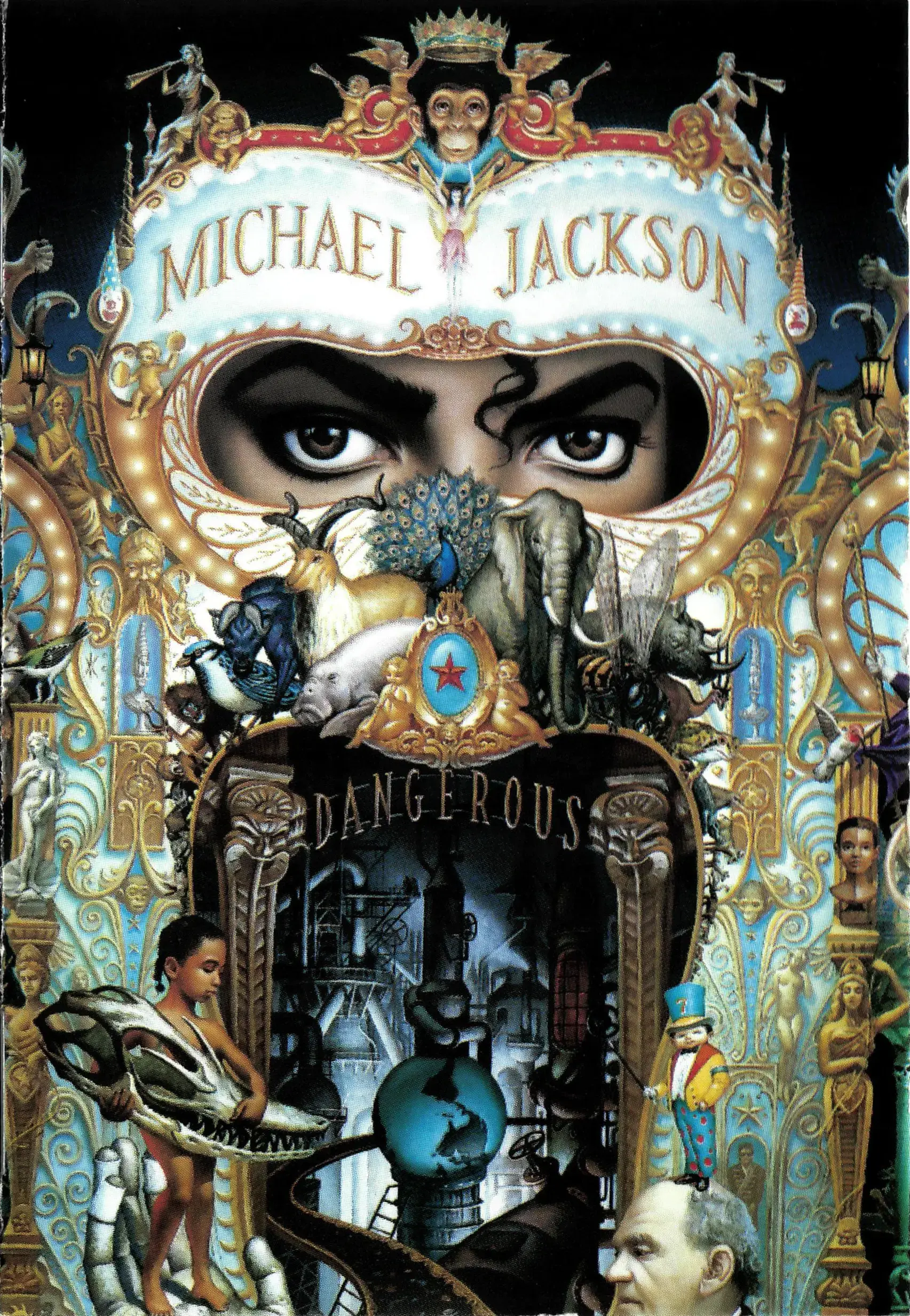
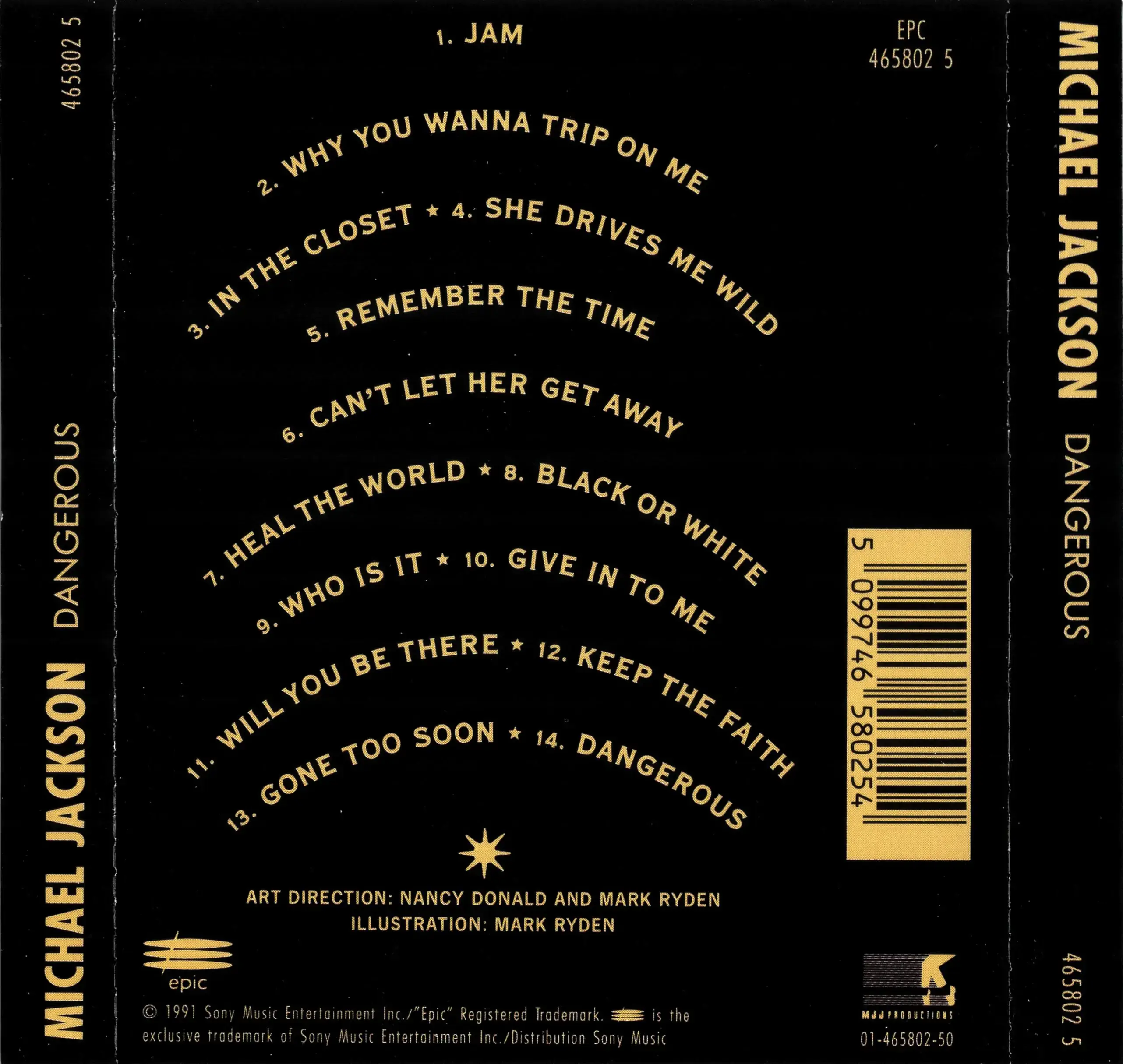
Instead of the inner pages with the song lyrics, the booklet only contains a sheet with the MiniDisc logo:
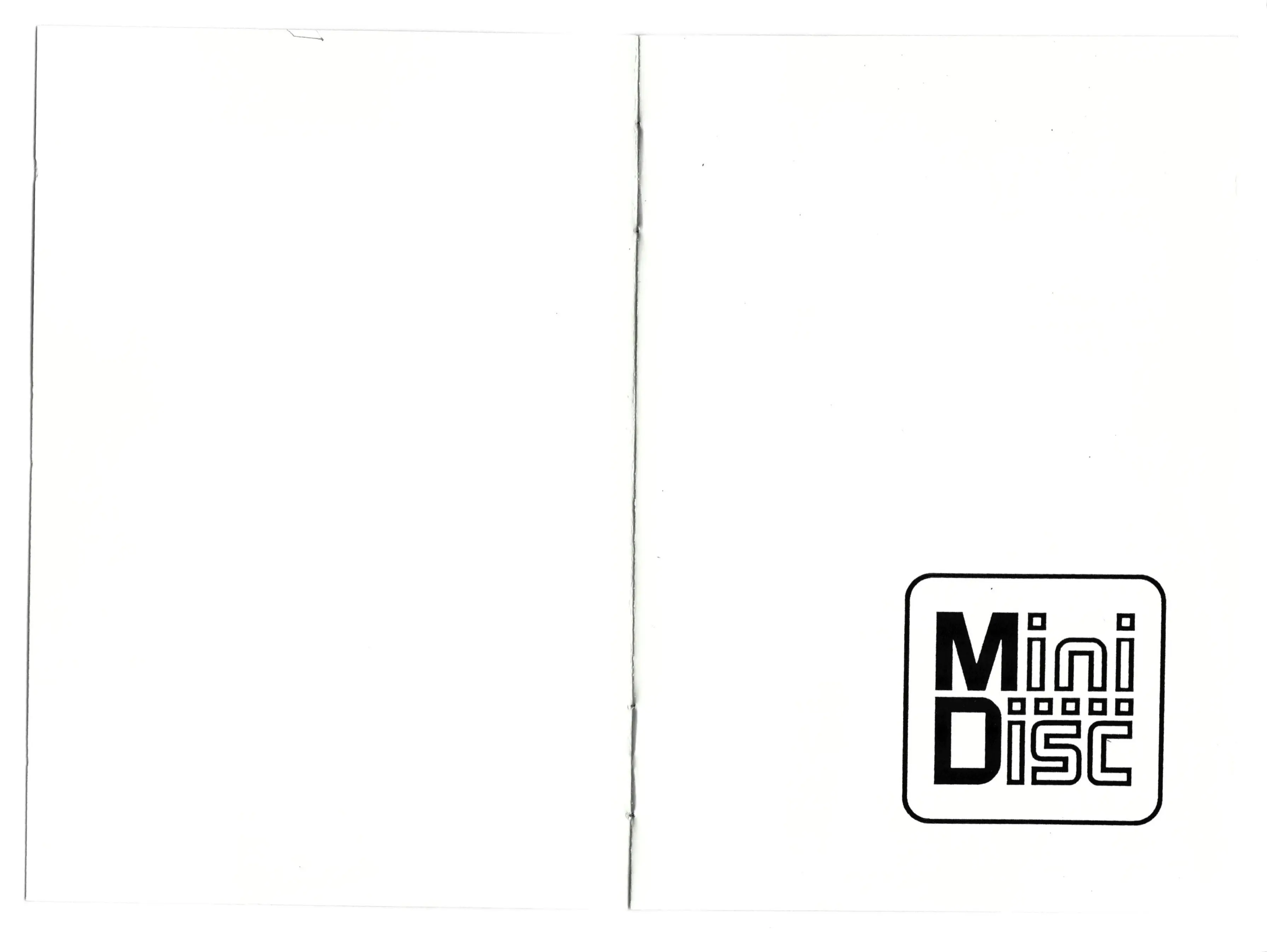
The front of the MiniDisc looks inconspicuous:
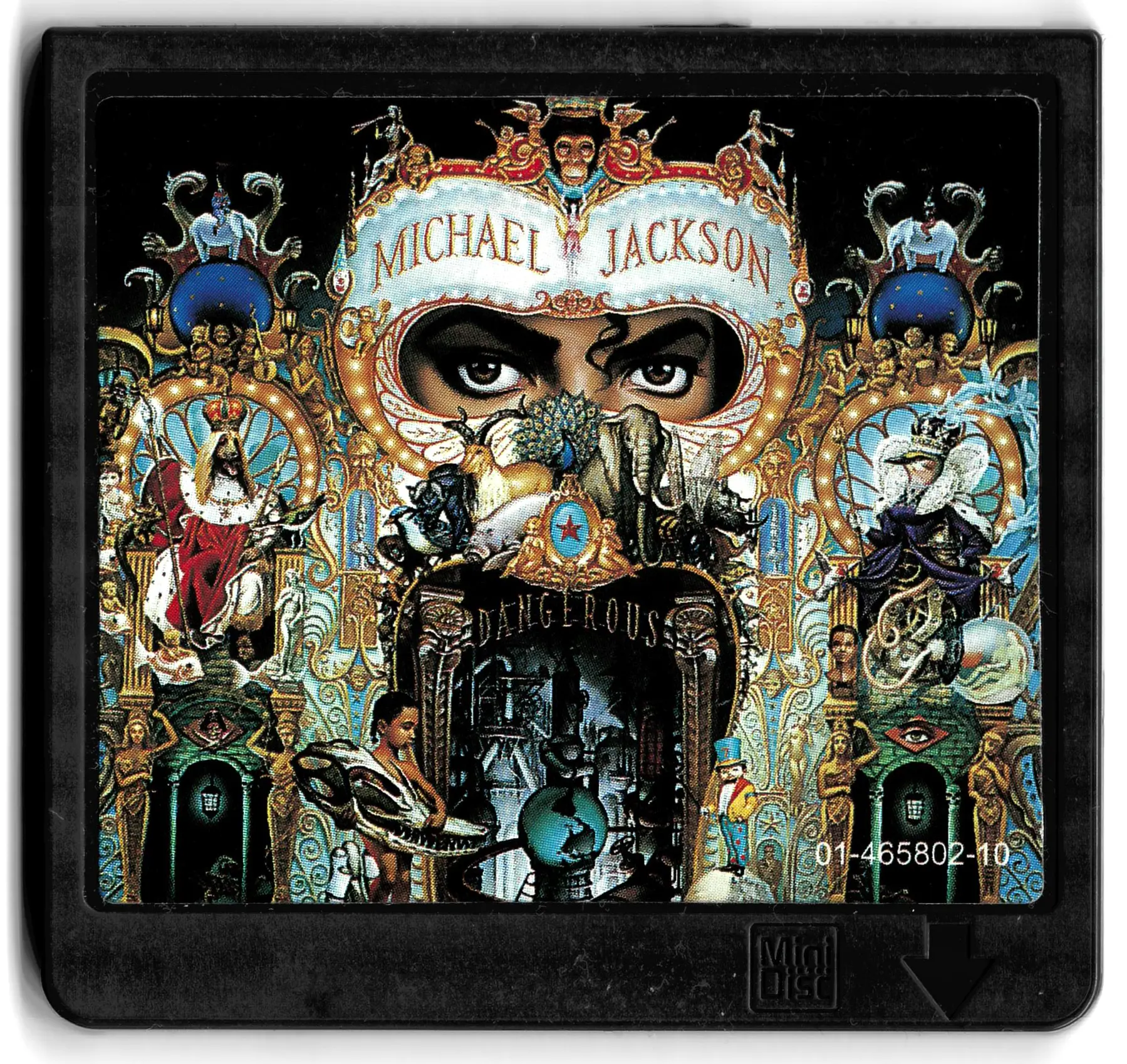
But instead of the track listing, the back only contains a sticker saying “NOT PLAYABLE”:
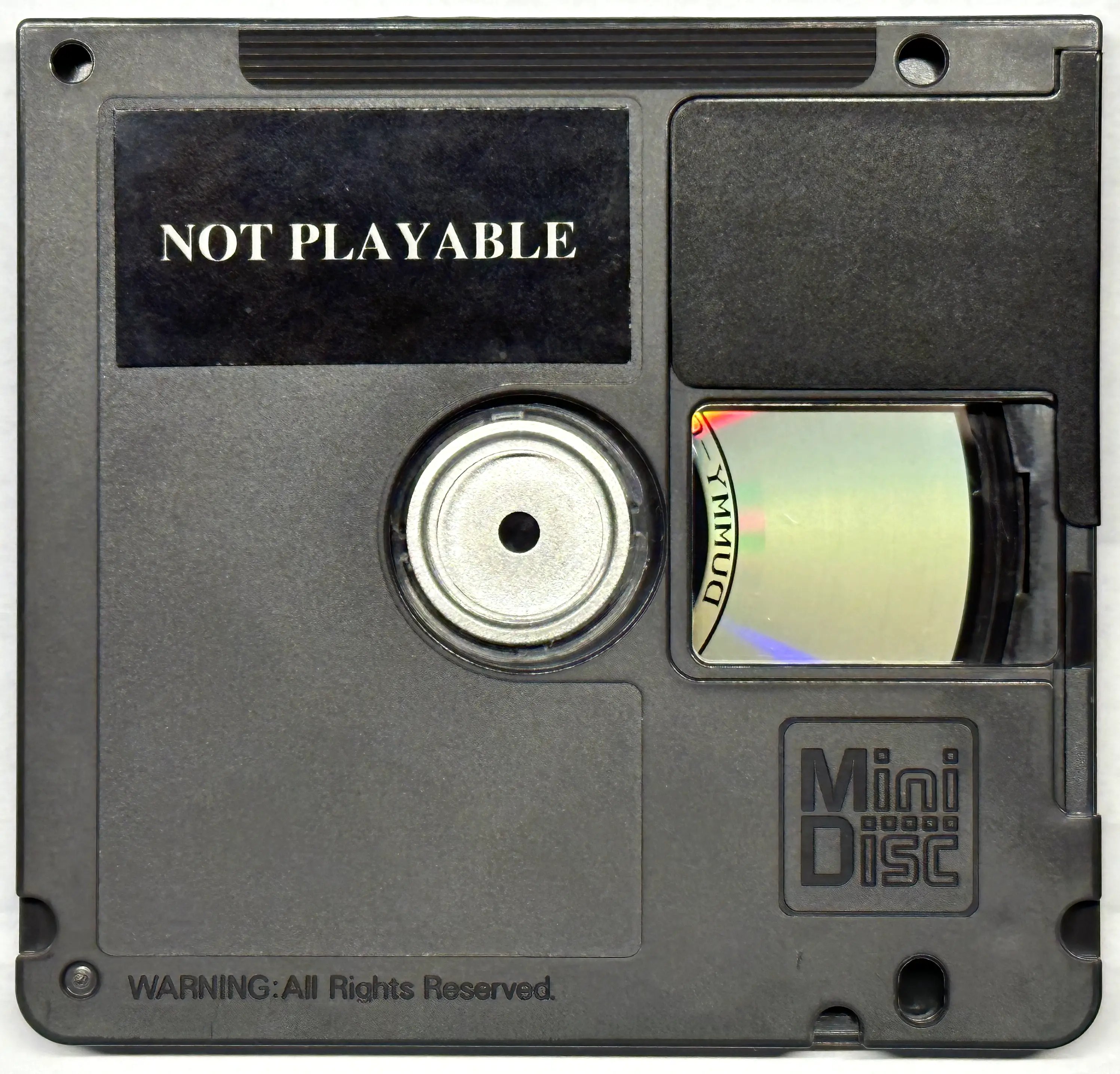
If you look closely, you can see that the actual disc behind the shutter has “DUMMY” etched into it. The full text is “DUMMY-CDF01-1/100”.
When trying to play the MiniDisc, any player will complain that it cannot read the TOC (table of contents). But a closer look reveals that the data area is not in fact empty:
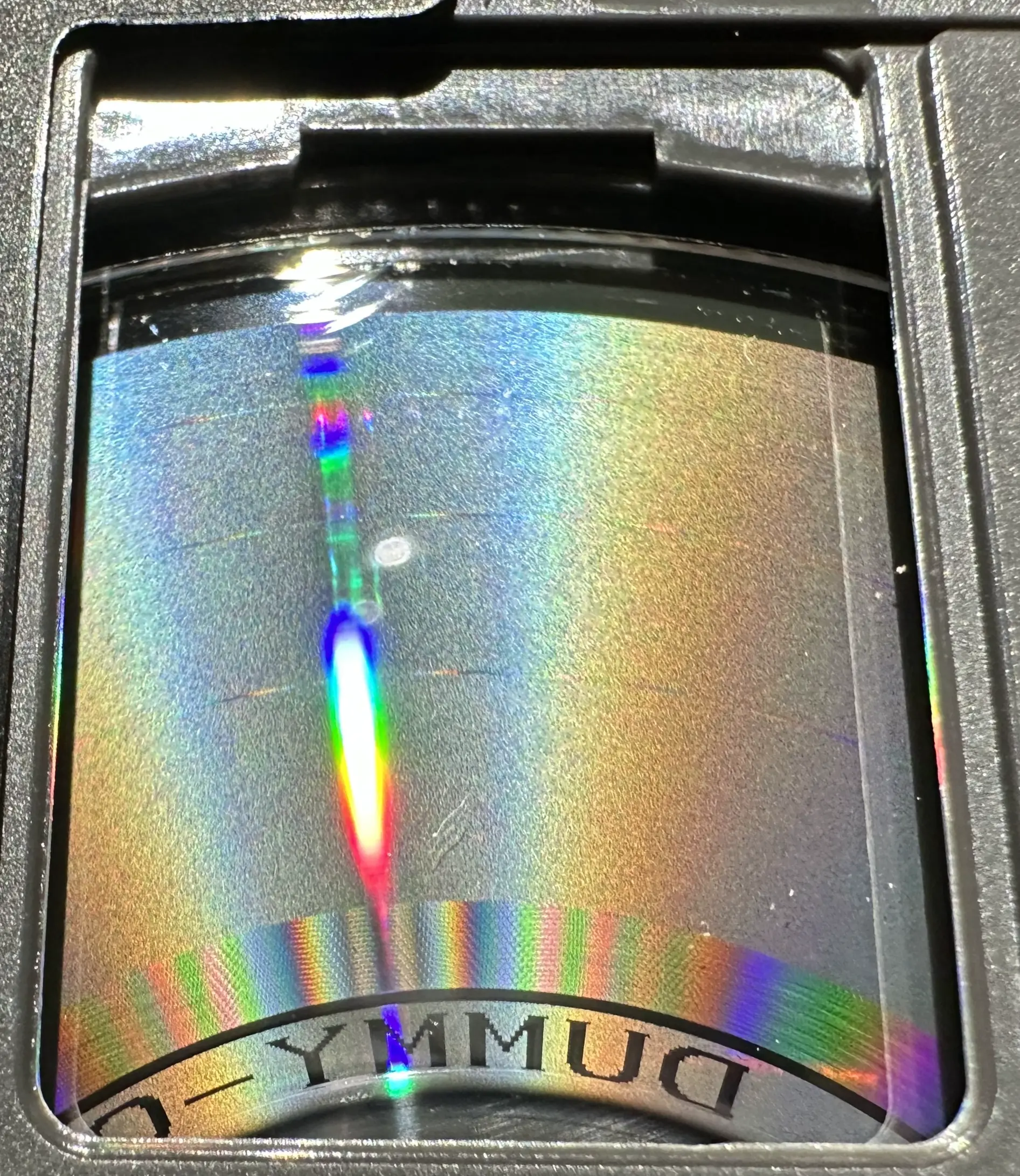
Like audio CDs, MiniDiscs are played from the inside to the outside. The innermost area (outside of the readable text) looks uniform, which usually indicates an empty area. Then, there are three areas of what looks like random data, with smaller regular stripes in between – this reminds of tracks on a vinyl record. For comparison, here is a proper pre-recorded MiniDisc:

The empty area is at the end of the MiniDisc, that is, on the outside. The data is in one large area – individual tracks are in fact not visible.
The random areas do look like they contain some data, so we have to try to read it! But how do you play a MiniDisc without a valid TOC? By hot-swapping a good MiniDisc with this one! I used a toothpick on the door detection switch of a SHARP MD-MT15 so I could open the door without the player noticing, as described in my article about dumping MiniDiscs:
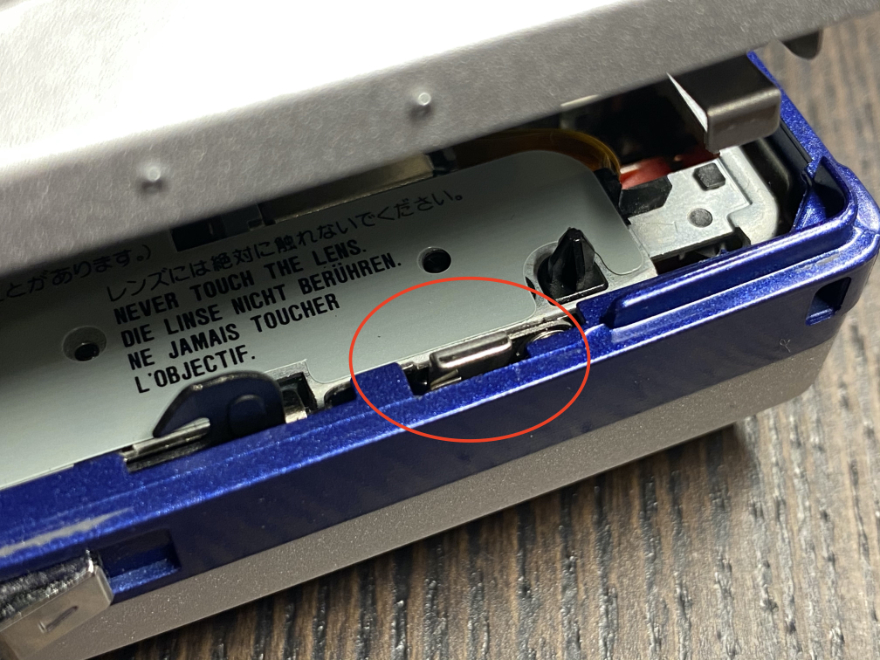
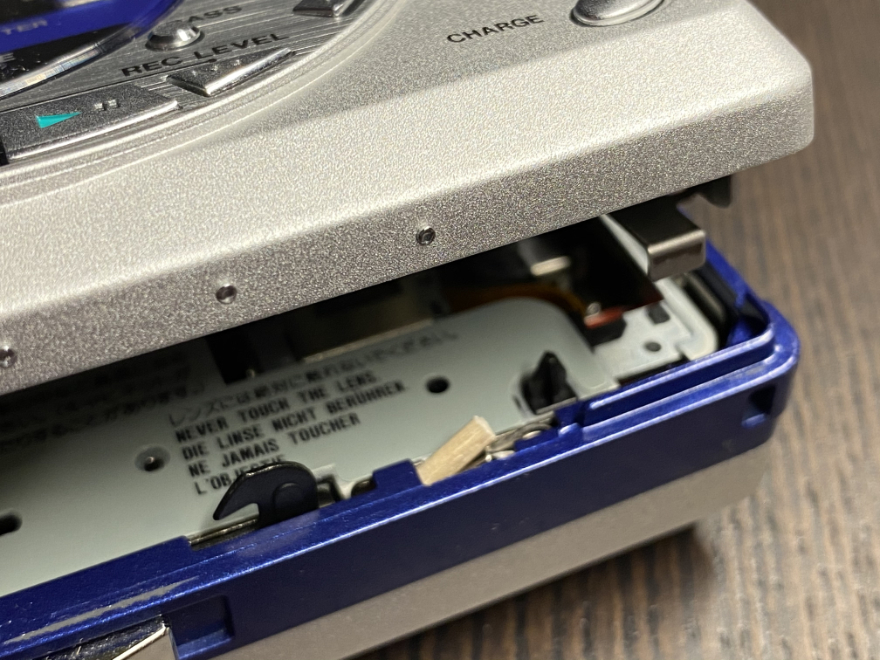
No matter which of the 11 tracks (i.e. offsets) of the good MiniDisc I picked, the player always shows a READ ERROR after a few seconds. It seems the “data” area does not in fact contain any correctly formatted data sectors.
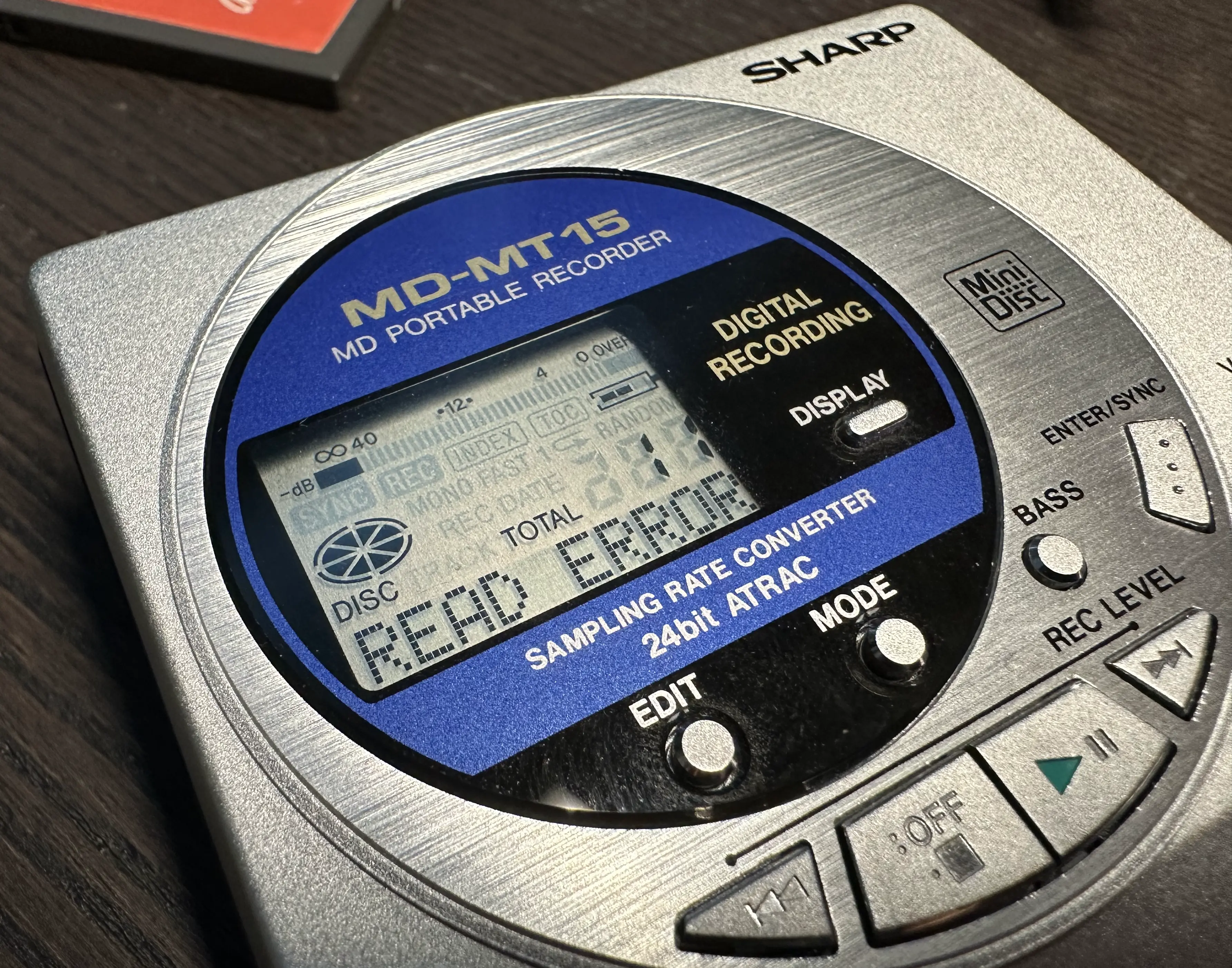
Yes, it’s disappointing, but I chose to publish this anyway to counter publication bias, and to maybe motivate someone else to come up with a different method to analyze what’s on these dummy MiniDiscs!
Here’s a question though: What was the point of these dummy promo MiniDiscs? What were they used for?
References
- Toutes les versions de “Dangerous” en MD by macaddict77, 2020-08-12
- Discogs: Dangerous (Promo, Not Playable – Mock-Up)
- Discogs: Dangerous (Promo)
If you have a sony netmd portable unit using the version of webmd that incorporates exploits at web.minidisc.wiki you can dump the ToC + atrac data. If you get in touch with the devs on the attached discord they might make a special version of the dumper for you that leaves out error correction so you can successfully dump the raw atrac data present.
No idea why sony would produce an intentionally bad disc like this, why not just make a blank?
Don’t know sh*t about MDs, but maybe these disks could only be played in special players?
Since it was a promo, perhaps they created intentionally bad discs to make them unusable as real discs. If they were valid good discs they would be re-recordable, creating incentives to hoard them. When Bowflex use to send videos of advertising for free, I remember us poor high school students use to order them tape over the write protect tab and record music videos we wanted to watch again.
Perhaps why they had “bad” data.
I’d imagine maybe it was a run of discs that had production errors (error on master?), so they used them for a creative promo rather than waste them?
@Charles: Pre-recorded MDs were pressed and thus unalterable, rather than re-recordable MO discs.
Also, perhaps the dummy disc is using a pre-release version of the MD standard? It almost looks reversed from a playable disc – empty area on the inside, to possibly promote faster data transfer across the larger physical area at the outside of the disc? Or perhaps it is a copy of some sort of test disc, with the different regions being encoded slightly differently, for research purposes? Perhaps there is data stored there, but it’s not audio data, but rather bit patterns that are easily verifiable?
Pure speculation of course, but speculation is quite fun sometimes 🙂
Just a thought based on the text being backwards on the MJ disc but not the other prerecorded one – could the disc be put in upside down to make it an unreadable dummy disc? And therefore, could you crack the case open, flip the disc and try it again?
Presumably, the dummy disc was used to present it visually as decoration in shops. To prevent shoplifting, however, it had no contents.